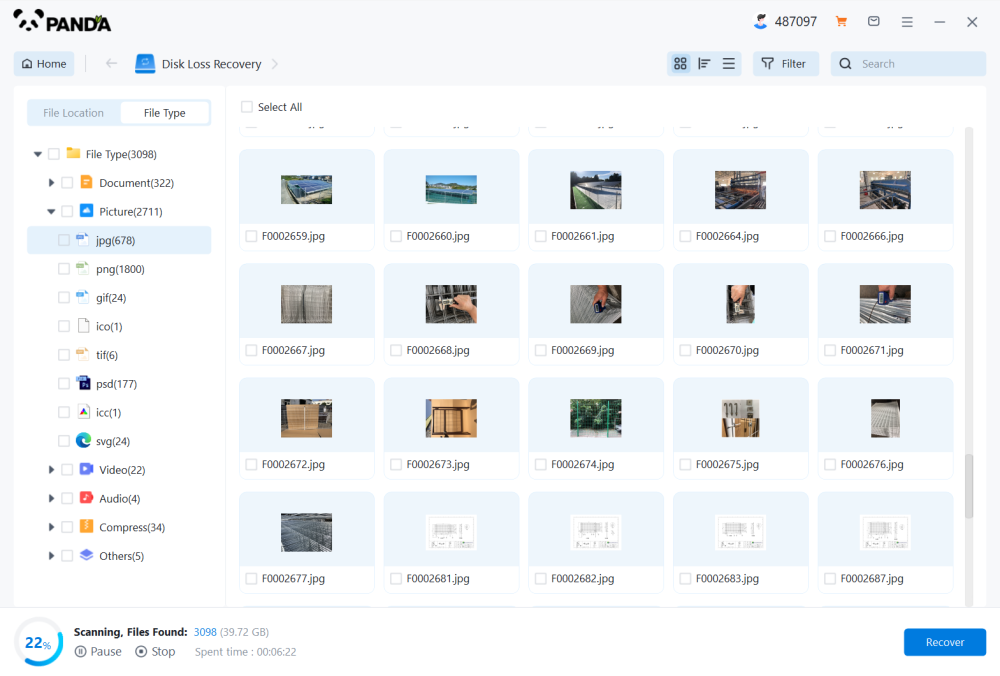Losing a cherished video can be a frustrating experience, especially if it contains precious memories or important information. Fortunately, there are several methods you can use to recover deleted videos from various devices and storage media.
1. Video Deletion
How Files are Deleted
When you delete a file, it is typically not removed from the storage media immediately. Instead, the file's entry in the file system is marked as deleted, and the space it occupied is marked as available for new data. The actual data remains on the storage device until new data overwrites it.
Why Deleted Files Can Be Recovered
Deleted files can often be recovered because they remain on the storage device until they are overwritten by new data. The success of recovery depends on several factors, including the amount of new data written to the device after deletion and the method used for recovery.

2. Common Scenarios of Video Deletion
Accidental Deletion
Accidental deletion is one of the most common scenarios. You might accidentally press the delete button or remove a file while cleaning up your device.
Formatting of Storage Devices
Formatting a storage device can lead to data loss, including videos. This can happen when you format a USB drive, SD card, or even your computer's hard drive.
Corruption of Files
Files can become corrupted due to unexpected shutdowns, malware infections, or software errors. This corruption can result in videos becoming unplayable or lost entirely.
3. Recovery Methods for Deleted Videos
Built-in Recovery Options
Windows Recycle Bin
Open Recycle Bin: Locate the Recycle Bin icon on your desktop and double-click it.
Find Your Video: Browse through the deleted items to find your video.
Restore the Video: Right-click on the video file and select “Restore.” The video will be restored to its original location.
Mac Trash
Open Trash: Click on the Trash icon in the Dock.
Locate the Video: Browse the items in Trash to find your deleted video.
Restore the Video: Right-click on the video and select “Put Back.” The video will return to its original location.
Using Data Recovery Software
If your video is not in the Recycle Bin or Trash, you may need to use data recovery software. Here are some popular options:
Panda Assistant
This is where Panda Assistant steps in as a leading data recovery software designed to recover lost, deleted, or inaccessible files from various storage devices. Whether it’s a simple accidental deletion or a more complex issue like file corruption, Panda Assistant offers a user-friendly and effective solution for all your data recovery needs.
Key Features
1. Comprehensive Recovery Capabilities
Panda Assistant supports a wide range of file types, including documents, photos, videos, and more. It can recover data from various storage media, such as hard drives, SSDs, USB flash drives, memory cards, and even damaged partitions. The software employs advanced scanning algorithms that allow it to detect lost files, ensuring that no data goes unrecovered.
2. Intuitive User Interface
One of the standout features of Panda Assistant is its intuitive user interface. Designed for users of all skill levels, the software guides you through the recovery process step-by-step, making it easy to navigate through its various functionalities. This ensures that even those with minimal technical expertise can successfully recover their lost data without any hassle.
3. Quick and Deep Scanning Options
Panda Assistant offers both quick and deep scanning options. The quick scan is ideal for recovering recently deleted files, while the deep scan delves deeper into the storage device to uncover files that may have been lost for an extended period. This flexibility allows users to choose the best method based on their specific recovery needs.
4. Preview Functionality
Before finalizing the recovery, Panda Assistant allows users to preview the files found during the scan. This feature is invaluable as it helps ensure that you are recovering the right files and not wasting time on unnecessary recoveries.
5. Safe and Secure
Data security is a top priority for Panda Assistant. The software is designed to perform non-destructive recovery, meaning it won’t overwrite or damage existing data during the recovery process. This provides users with peace of mind knowing that their data is safe throughout the recovery process.
4. Step-by-Step Guides for Different Devices
Recovering Deleted Videos from Windows
Check Recycle Bin: Follow the steps outlined in the “Built-in Recovery Options” section.
Use Data Recovery Software: If not found, download a data recovery tool (like Recuva or EaseUS).
Perform a Deep Scan: If the quick scan doesn’t yield results, perform a deep scan for more thorough recovery.
Recovering Deleted Videos from Mac
Check Trash: Open the Trash and look for your video.
Use Data Recovery Software: If not found, try a tool like Disk Drill or EaseUS.
Use Time Machine: If you have a Time Machine backup, restore the video from the backup.
Recovering Deleted Videos from Android
Check Google Photos: Open Google Photos and check the “Trash” or “Bin” folder.
Use Data Recovery Apps: If the video isn’t found, consider using apps like DiskDigger or EaseUS MobiSaver.
Install the app and follow the prompts to scan your device for deleted videos.
Connect to PC: If the video is still not recovered, connect your device to a computer and use recovery software.
Recovering Deleted Videos from iPhone
Check Recently Deleted: Open the Photos app, go to “Albums,” then “Recently Deleted” to check for deleted videos.
Use iCloud: If you have iCloud backups, restore your device from a backup that contains the video.
Third-Party Recovery Software: If necessary, use software like Dr.Fone or iMobie PhoneRescue to scan and recover deleted videos.
Recovering Deleted Videos from SD Cards and External Drives
Check for Hidden Files: Sometimes files may not appear due to hidden attributes. Change the folder options to show hidden files.
Use Recovery Software: Download recovery software and run a scan on the SD card or external drive.
Connect to a Computer: Connect the SD card or external drive to a computer and use the recovery software to recover deleted files.
5. Preventing Future Video Loss
Best Practices for Video Storage
Regular Backups: Regularly back up important videos to multiple locations (e.g., external hard drives, cloud storage).
Use Reliable Storage Devices: Invest in quality storage devices to minimize the risk of failure.
Organize Your Files: Keep your files organized to reduce the chances of accidental deletion.
Regular Backups
Cloud Storage: Use services like Google Drive, Dropbox, or OneDrive for automatic backups.
External Drives: Regularly transfer videos to external hard drives for additional security.
Scheduled Backups: Set up automated backup schedules to ensure regular copies of your data.
Recovering a deleted video may seem daunting, but with the right tools and techniques, it is often possible. Whether you use built-in recovery options, data recovery software, or professional services, understanding the recovery process is key. Remember to adopt preventive measures to protect your videos in the future. Regular backups and careful file management can significantly reduce the risk of losing important videos. With the knowledge from this guide, you can take the necessary steps to retrieve your lost videos and safeguard your digital memories.




